A Different Tuna Salad
We love canned tuna for its high protein, ease of use and the fact that if we have some in the pantry, we know there can always be a low FODMAP meal at hand. This recipe for Low FODMAP Mediterranean Tuna Salad with Chickpeas is a perfect example, combining tuna, chickpeas, cucumbers, tomatoes, scallions and a light vinaigrette.
Read All About It
Read our article All About Canned Tuna to learn how to choose the best tasting, healthiest, safest and environmentally friendly tuna – there is a lot to learn! For instance, water packed tuna is not always water packed!
And it is sometimes packed in a high FODMAP broth. Our article explains it all.
Let’s Talk Chickpeas
Many beans and legumes contain FODMAPs, and with some many foods (most foods!), serving size is paramount. In small amounts there can be low FODMAP servings that are safe to eat.
With chickpeas, a ¼ cup (42 g) earns a Green Light low FODMAP amount. But this is not for all chickpeas. You must use canned and then drain them, rinse them and drain them again.
This is because the GOS and fructans are water based and a good portion of them can be rinsed away. That said, start with a small amount to see how your digestive system does with them.
Dump & Mix
This salad makes a hearty lunch or light dinner and comes together quickly. It is one of those dump and mix recipes that even kids can make!
Make sure to check out our article, All About Canned Tuna, 18 Ways to Use Canned Tuna as well as other salad recipes – such as these
- Low FODMAP Pasta with Tuna & Sun Dried Tomatoes
- Low FODMAP Mediterranean Tuna Salad with Chickpeas
- Low FODMAP Pantry Pasta with Tuna, Lemon & Olives
- Low FODMAP Tuna Macaroni Salad
- Low FODMAP Tuna Pan Bagnat – aka Best Tuna Sandwich Ever
- Low FODMAP Tuna Salad
- Low FODMAP Salade Niçoise
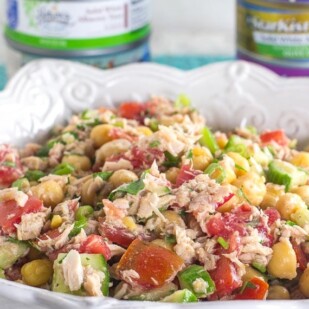
Low FODMAP Mediterranean Tuna Salad with Chickpeas
There is more to tuna salad than mayo! Check out this protein packed version with chickpeas and Mediterranean flavors.
Low FODMAP Serving: Recipe makes about 5 cups (700 g); serving size ½ cup (70 g)
Ingredients:
- 1, 15.5- ounce (439 g) can chickpeas drained, rinsed, drained and patted dry
- 2, 5- ounce (142 g) cans light tuna, water-packed, drained well
- 1/2 cup (32 g) chopped scallions green parts only
- 2 medium (300 g) beefsteak tomato, cored and chopped
- 1 cup (150 g) chopped hothouse or seedless cucumber (keep peel on)
- Your Favorite Low FODMAP vinaigrette we recommend an olive oil and vinegar based
- Oregano, dried or fresh chopped
- Kosher salt
- Freshly ground black pepper
Preparation:
-
Gently stir together the drained chickpeas, tuna, scallions, tomatoes and cucumber. Dress lightly with vinaigrette and season with oregano, salt and pepper to taste.
-
Low FODMAP Mediterranean Tuna Salad with Chickpeas is ready to eat or can be refrigerated in an airtight container for up to 3 days.
Notes:
Tips
- Make sure to drain the canned chickpeas, rinse them and drain again to lower their FODMAP content.
Nutrition
All nutritional information is based on third-party calculations and should be considered estimates. Actual nutritional content will vary with brands used, measuring methods, portion sizes and more. For a more detailed explanation, please read our article Understanding The Nutrition Panel Within Our Recipes.
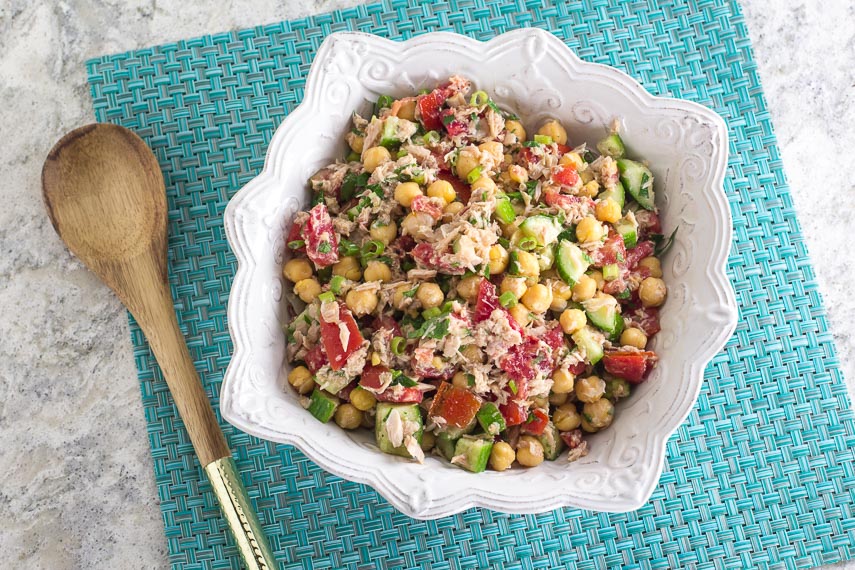
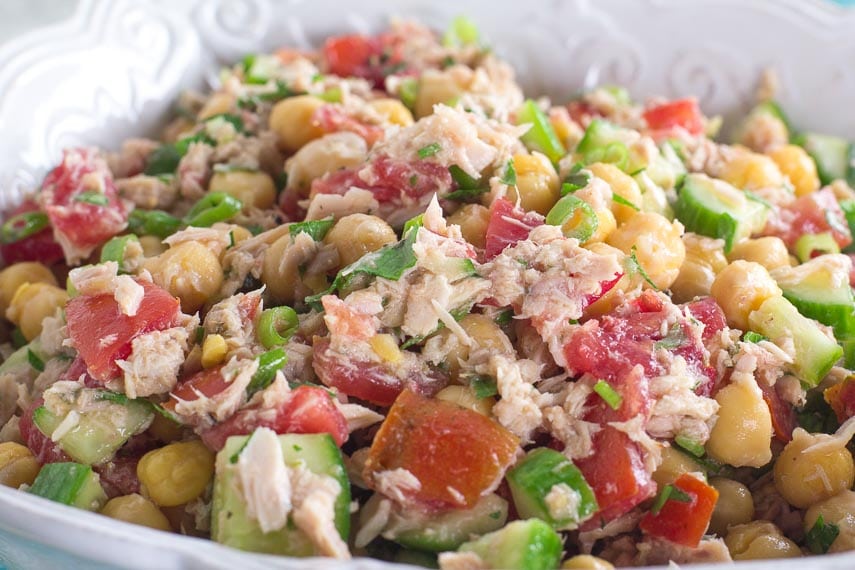
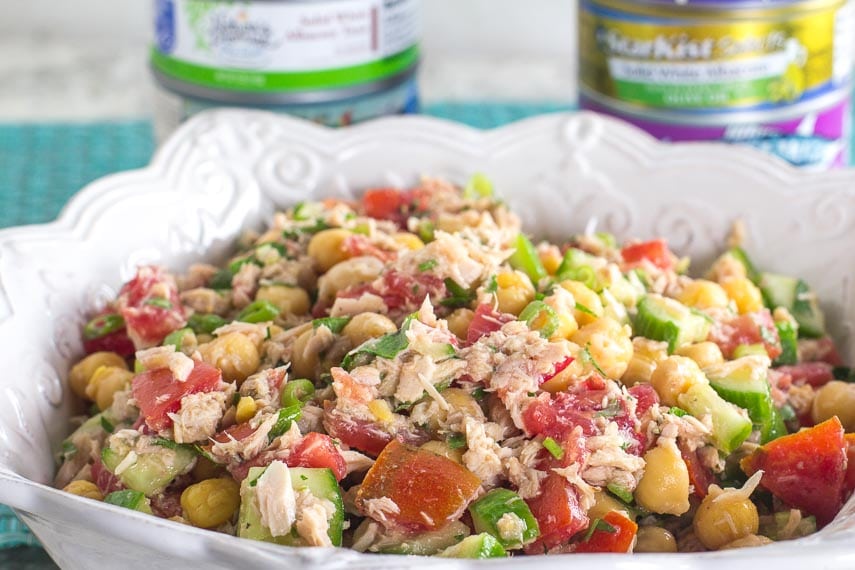
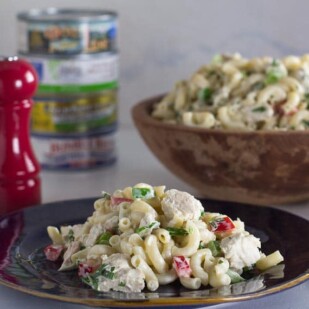
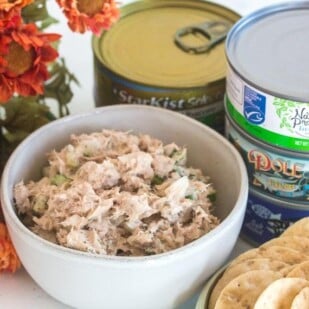






Looks great—I have been looking for a tuna and chickpea salad recipe! Can you suggest a vinaigrette that goes well with this?
Hi there, our Red Wine or Balsamic would be perfect. Depending on your comfort level, the sherry vinaigrette is lovely as well (sherry vinegar has not been lab tested, FYI).